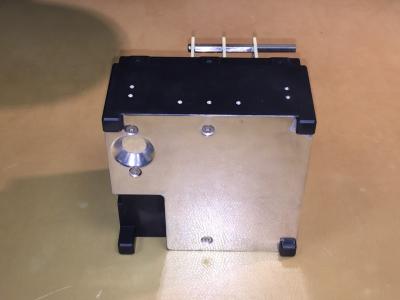X-ray Flux Monitor for CubeSats (XFM-CS)
Programme
GSTP
Programme Reference
G617-237EE
Prime Contractor
ISAWARE LTD
Start Date
End Date
Status
Closed
Country
Finland

Objectives
Design and development of an instrument to measure the integrated flux of solar X-rays across 2 energy bands to be flown on a cubesat with a view to future development of a fully-space qualified unit for space weather purposes.
Description
X-ray emission plays an important role in characterising and locating energetic eruptions on the surface of the Sun and as a result there is a long history of X-ray imagers and radiometers. X-ray imagers include the SXI imager on recent GOES satellites and the SXT instrument onboard Yohkoh. As an alternative to imagers, whole-disk monitors provide typically higher time resolution a simpler means of capturing the onset and evolution of solar events, and so providing alerts. Monitors (or radiometers) include those on RHESSI and the XRS instrument on GOES satellites. X-ray flares, classified from A (smallest) to X (largest), are often a precursor to high energy particle radiation storms and disturbances in the near-Earth magnetic and electric fields. In addition, flares directly disturb the ionosphere, which is further disturbed by magnetospheric storms.
This activity will include the design, development, assembly and testing of a XFM-CS (X-ray flux monitor for cubesats) instrument with a baseline spectrum of 0.05 - 0.8 nm over at least 2 channels. The space-based detection of X-rays is used for space science as well as space weather related activities. This instrument will be geared towards monitoring and forecasting of space weather phenomena and should be capable of detecting all flares of at least class M1 and above with a cadence of 1 minute and on-board processing times less than 1 second.
The unit will be designed to be flown on a cubesat and as such will be accommodated on a single cubesat unit, the cubesat bus shall be developed under a separate activity and the final cubesat may have a 2u or 3u configuration. The instrument shall be low mass < 500 g and with low power demands in-line with power generation levels on a cubesat. As such this development shall include the establishment of system requirements, system-level design, detailed subsystem design of the front end sensor unit with electronics and the back-end electronics, thermal modelling of the instrument, testing on a subsystem level, and assembly and testing of the complete system. This activity aims to develop an XFM unit to be flown on a cubesat and prove the usefulness of a future unit given the resources for continuous solar observation and real-time data downlink. It shall be developed using commercial off-the-shelf components where feasible to reduce costs but fully-space qualified equivalent components shall be identified in all cases.
Application Domain
Generic Technologies
Technology Domain
4 - Space Systems Environments and Effects
Competence Domain
10-Astrodynamics, Space Debris and Space Environment
Initial TRL
TRL 4
Target TRL
TRL 5
Achieved TRL
TRL 8
Public Document
